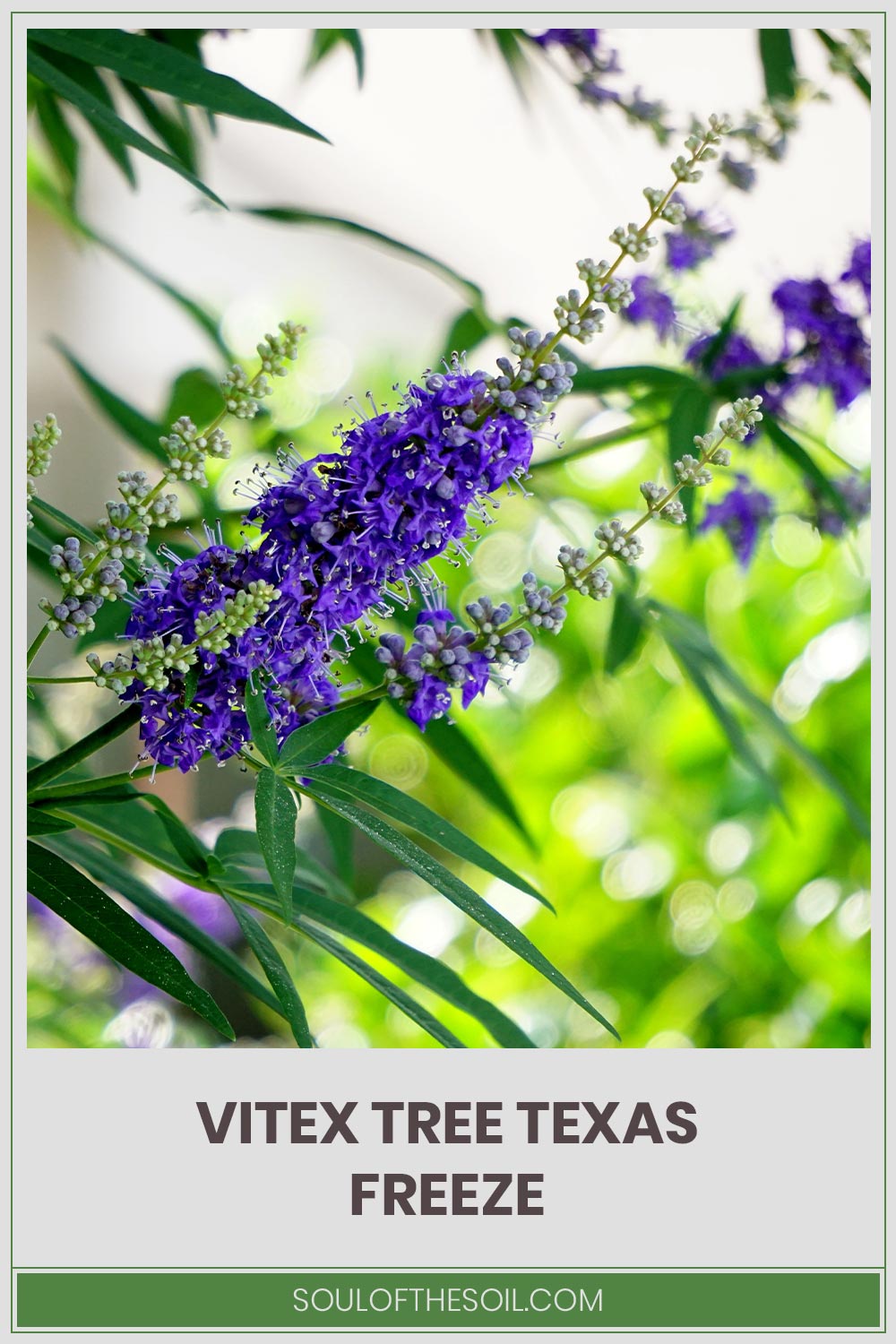Vitex Tree Texas Freeze
We may earn commissions for purchases made through links on our site. Learn more on our about us page.
Vitex trees (Chaste trees) are flowering trees that bloom from late spring to the start of fall. The vitex is heavily sought after for its fragrant, white, and purple flowers present throughout the whole summer.
These trees (also can be pruned to shrubs) are a great option for adding shade to a landscape while not sacrificing color.

Will Vitex Survive a Freeze?
Vitex trees have been naturalized in the southern climates, often used as a lilac alternative due to their excellent heat tolerance. As for its cold hardiness, the vitex tree is rated for Zones 6 – 9 and can withstand temperatures as low as -9 degrees Fahrenheit!
While it can technically handle temperatures that low, it may die and grow back again the following spring if the freeze was too long. The good news is; that once you plant a vitex tree, it will come back every year!
What Plants Can Survive the Texas Freeze?
Many plants will survive the Texas Freeze; bushes, trees, and even flowering plants can be freeze tolerant.
Some popular freeze-tolerant plants in Texas are :
- Holly – Holly plants can be found in a variety of different forms, most commonly found as bush. Holly is known most notably for staying green year-round and having bright red berries in the fall and winter.
- Texas Mountain Laurel – The Texas mountain laurel is a great option for a cold-hardy plant that also boasts ornamental value. It is also known for its enchanting smell, commonly described as smelling like grape kool-aid!
- Live Oak Trees – More specifically, Texas live oak, these native evergreen trees are tried and true in the Texan climate and can handle just about anything mother nature throws at them.
There are many other options for freeze-tolerant plants, and it all comes down to personal preference and your specific climate. Another thing to note is even if a plant is not cold hardy, there are steps you can take to increase its likelihood of making it through the winter.
Is Vitex Cold Hardy?
In most Texan climates, the vitex is very cold and hardy, making it through the winter with flying colors (figuratively, of course). However, when exposed to colder climates, vitex can run into some troubles.
In USDA Zones 6 and below, vitex may die to the ground and not return until the following spring. While this may be frustrating if you want a fully mature vitex tree, you can always count on vitex coming back with its beautiful flowers every year!
How Can You Protect Vitex Tree?
Typically vitex will survive a mild freeze without any assistance, but there are some things you can do if you are expecting harsh winter conditions.
- Cover Your Vitex Branches – If the freezing wind is in the forecast, covering your vitex branches in clear plastic may help shield them from frostbite.
- If Potted, Bring Inside – This may be obvious, but bringing it into any shelter can save it from frost if your vitex resides in a pot.
- Place Potted Plants Around It – If your vitex is in the ground, place tall potted plants around it to act as a wind barrier and provide extra insulation.
How Can You Tell If It Did Survive the Texas Freeze?
So the brutal winds passed, and you are wondering how to tell if your vitex tree survived the callous conditions. While you might think it would be obvious if it is alive or not, sometimes it can be tricky to come to a conclusion.
Unfortunately, it can be rather difficult to tell if your vitex survived until spring, when you can observe new growth (or not). If there is obvious cold damage to your vitex (dark brown/black branches), prune them and hope for the best.
Final Thoughts on Vitex Tree and Texan Freeze
In summary, vitex trees can survive a freeze if you take the proper precautionary steps to ensure the safest conditions for the plant. Given the right climate, vitex can survive for years on end and mature to heights of 20 feet!
Unfortunately, if you live in a colder climate, vitex will likely die to the ground in the winter and return as a perennial plant the following spring. In other words, once planting a vitex, you can always count on it coming back every year.



Leave a Reply
You must be logged in to post a comment.